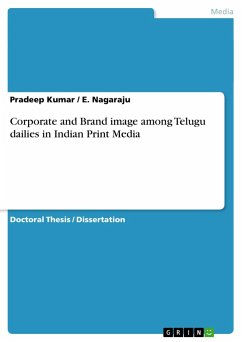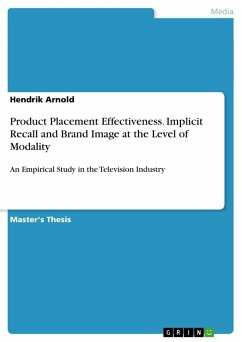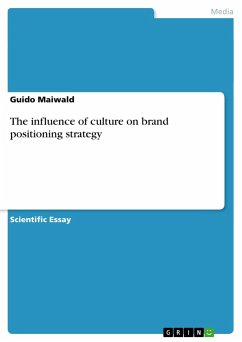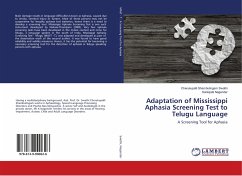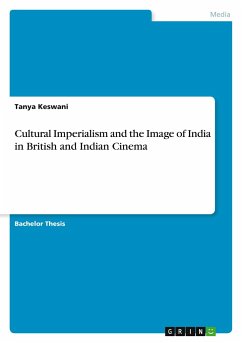Doctoral Thesis / Dissertation from the year 2013 in the subject Communications - Public Relations, Advertising, Marketing, Social Media, grade: none, , course: M. Phil in Management, language: English, abstract: Unlike the global print industry, which is moving towards digitisation and showing a negative growth year on year, the Indian print media industry is going strong and is expected to continue similarly. The print industry in India, with over 90 million copies in circulation daily, is one of the largest in the world, second only to China (130 million copies). Though there are efforts towards digitization and conversion to online readership, but there has not been much progress. Most newspapers have an online presence and a growing view count on their portals, but hard copy still remains the preferred mode to access news. A significant change in this trend is not expected over the next five years.Overall, the size of this industry was INR 178.7 billion in 2010, registeringa growth of 10.7% over INR 161.5 billion in 2009.The Indian print industry is projected to grow by 9.6% over the period 2010-15 and is projected to reach an estimated INR 282.0 billion in 2015 from the present estimate of INR 178.7 billion in 2010. Newspaper will continue to have a major share in the print market.Especially on telugu media, it is observed that the amount of knowledge for conceptual enrichment or for industry analysis is very much restrained. Further in today's times as the telugu dailies are in such a competitive environment seen never before, such studies are far more relevant and wanting. This particular study has been taken up to study the Telugu customer profile in Telugu dailiee, identify the corporate image of leading Telugu dailies, asses brand image among leading Telugu dailies, measure the satisfaction towards the various features of leading Telugu dailies and suggest specific measures of leading Telugu dailies for improvement in brand and corporate image. The relationship of the demographic profile of the customers on the choice of the daily is assessed and if the customer choice of Telugu daily influences the customer recommendation to a Telugu daily and the corporate image.The study is done on Telugu print media customers in Andhra Pradesh in India.through a well designed questionnaire. Secondary data is collected from books, magazines, company reports, some websites and news papers. Concerning sampling methodology, at the first stage the state of Andhra Pradesh is divided in to 3 regions, Telangana, Coastal and Rayalaseema using judgement sampling method such that a well diversified respondents can be taken into the sample. It is also quite logical as the vernacular and the accent of the three regions differ significantly. In the second stage, major cities of these three regions are selected viz., Hyderabad, Vijayawada and Kadapa, once again using judgement sampling method. 50 customers from each region are selected to administer the questionnaire using a convenience samling method, a total of 150 telugu daily readers are selected. Statistical tools like Simple ratios, percentages, weighted averages and chi square are used to present the data and test the hypotheses. A schedule is administered using a structured questionnaire which include the following sections viz, Customer profile, Corporate image, Brand image, Satisfaction levels of readers with the features of the daily, where dichotomous, multiple choice, ranking, likert scale, importance scale etc., are used.

